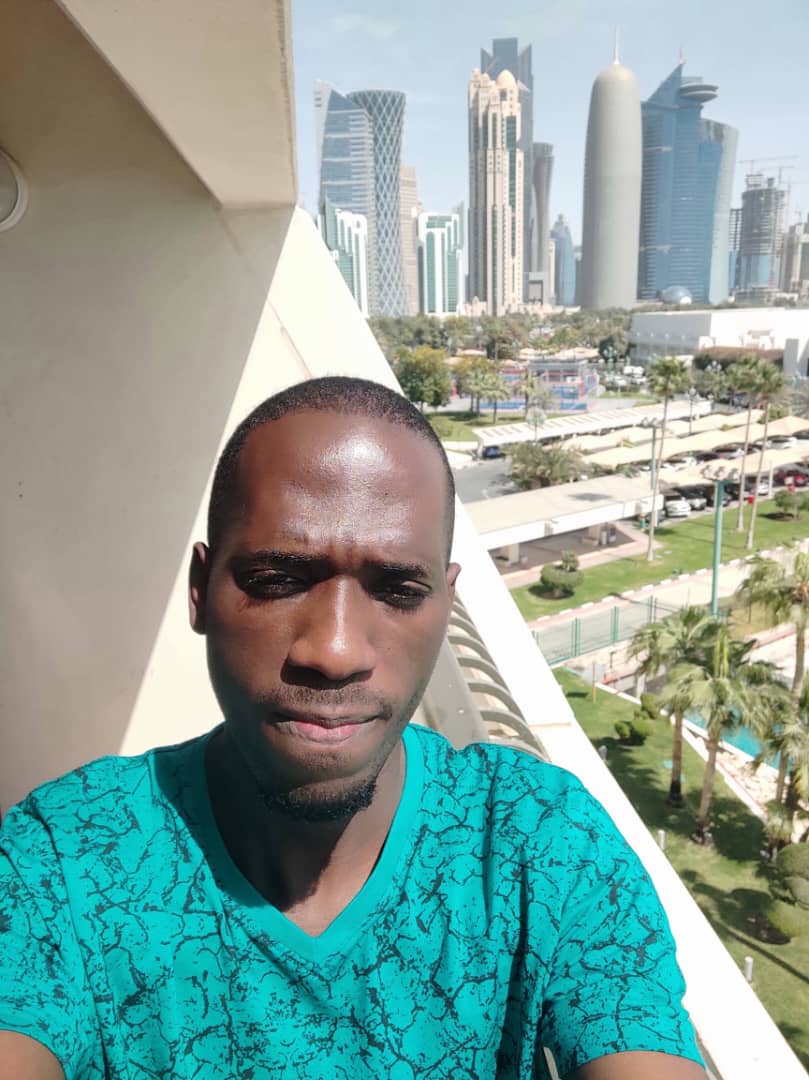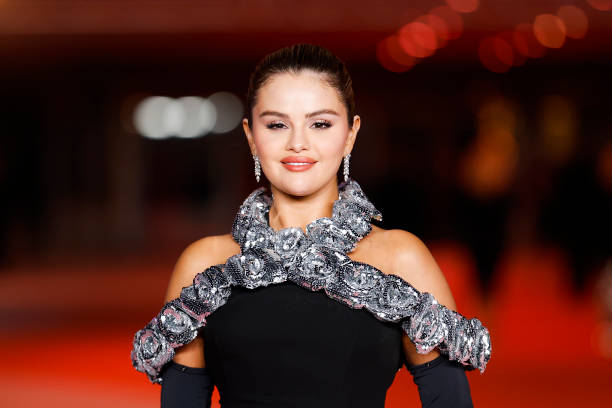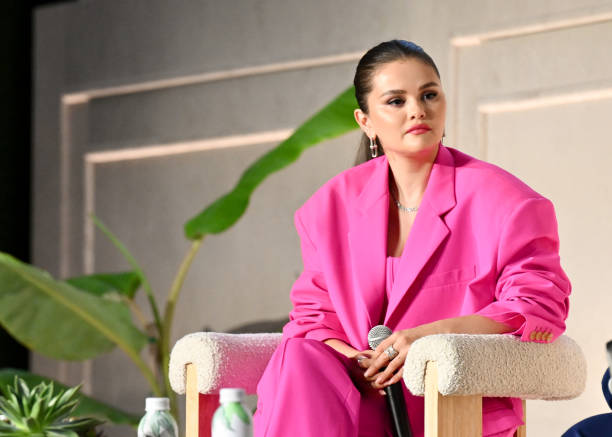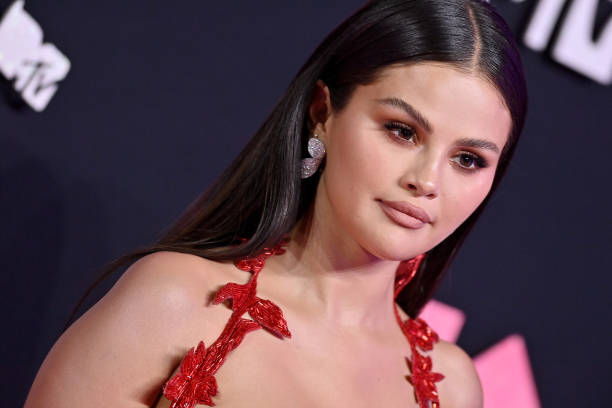India is a land of diverse cultures and traditions, and its art forms reflect this diversity. From folk and tribal art to painting styles and sculptures, Indian art is a testament to the country’s artistic legacy and cultural depth. Each region is known for its unique form of folk art, and these art forms have distinctive styles that are ethnic, simple, yet vibrant, and colorful1
Traditional Art Forms.
India has a rich cultural heritage and history dating back thousands of years. Various art forms have originated and flourished in the country over centuries, reflecting the diversity of Indian culture. Here are some examples of traditional Indian art forms:
Paintings
- Madhubani Paintings – Originating in Mithila region of Bihar, these vibrant paintings are done on walls and floors using natural dyes and pigments. Common motifs include Hindu gods, plants, animals and scenes from mythologies.
- Miniature Paintings – Detailed handmade paintings on paper or cloth evolved in the Mughal era. Popular styles include Rajasthani, Mughal, Deccani and Pahari miniatures depicting religious, royal and social themes.
- Tanjore Paintings – Originating in Thanjavur area of Tamil Nadu, these paintings done on wooden planks have real gold and gemstone work on them. Common subjects include Hindu deities and royal court scenes.
Textiles
- Kalamkari – A hand painting and block printing art on textiles that originated in Andhra Pradesh. Mystical Hindu imagery is created using natural dyes.
- Kantha Embroidery – Practiced in West Bengal and Odisha, this running stitch embroidery is done on quilts using folk motifs.
- Bandhani – A tie-and-dye textile decorated using bright colors and symmetrical patterns hailing from Gujarat and Rajasthan.
Folk Art Forms
- Madhubani Paintings – As mentioned above, these colorful paintings done in Bihar have become popular globally.
- Warli Paintings – Tribal art by Warli tribe in Maharashtra featuring ritual symbols and stick figures, usually on mud walls.
- Gond Paintings – Tribal art by Gond tribe from Madhya Pradesh depicting folk tales and mythology in vivid colors.
- Pattachitra – Traditional palm leaf paintings of Odisha depicting mythological themes and epics in elegant detail.
Sculptures
- Stone Sculptures – Ancient Indian temples are adorned with intricately carved stone idols and sculptures depicting gods and goddesses, dancers, musicians and more.
- Bronze Figurines – Crafted using the lost-wax technique, these figurines from South India capture classical dance poses and Hindu mythology.
- Terracotta Art – Clay sculptures and decorative pieces depicting religious motifs and rural life scenes, usually burnished orange or red.
Classical Dance and Music
- Bharatanatyam – One of the most ancient classical dance forms from Tamil Nadu, traditionally performed by women and known for expressions and poses.
- Kathak – Originating in Northern India, this classical dance form involves rhythmic footwork and pirouettes telling stories through expressions and hand gestures.
- Carnatic Music – Classical singing tradition from South India that uses ragas and talas, usually performed in a group with multiple instruments.
- Hindustani Music – North Indian classical singing relies heavily on improvisation and explores romantic, devotional and spiritual themes.
Evolution of Indian Art Over Time
The origins of Indian art can be traced back to the Indus Valley Civilization (3000 – 1500 BCE) known for bronzeware, seals, jewelry. Between the 1st to 7th centuries, Buddhist and Jain art flourished under various dynasties.
8th to 18th centuries saw development of varied painting styles under the Chola dynasty and Mughal empire. The British colonial rule in the 19th century influenced Indian art, architecture and crafts.
After India’s independence in 1947, Indian art started to evolve with modern sensibilities while retaining traditional roots. Global recognition of Indian art has increased over the past few decades.
Role of Traditional Art in Indian Culture
- Preservation of culture and heritage over centuries
- Reflection of traditions, values and identity of various regions and communities
- Depiction of mythologies, epics and religious themes that are integral to Indian ethos
- Form of creative expression, story-telling and communication
- Promotion of cultural diversity across the country
- Source of livelihood and empowerment for skilled artisans and craftsmen
- Iconic representation of India globally – art forms like yoga, dance and music are synonymous with the country
More About History of Indian Art
Some key highlights and milestones:
- Oldest known art – Bhimbetka cave paintings from 30,000 BCE
- Exquisitely carved pillars and frescoes of the Ajanta and Ellora caves built between 2nd century BCE to 6th century CE
- Bronze Nataraja statue from Chola dynasty of 11th century symbolizing dance and cosmic cycles
- Intricate Mughal miniature paintings combining Indian and Persian styles
- Company paintings commissioned by British East India company in 18th-19th century
- Progress of Indian art from nationalist movements of the British rule to the post-colonial era
- Impact of globalization on contemporary Indian art in the 21st century
Famous Examples of Indian Paintings and Sculptures
Paintings
- Kishangarh miniature Radha Kunj by Nihal Chand from 1735 CE
- Raja Ravi Varma’s paintings of Hindu gods and goddesses in 19th century
- Rabindranath Tagore’s works like ‘Three Girls’ and ‘Cattle Fair’
- Amrita Sher-Gil’s ‘Village Scene’ capturing Indian rural life in the 1930s
- MF Husain’s paintings of horses, Mother Teresa and more up to 21st century
Sculptures
- Dancing girl bronze statue from Mohenjo-daro, c. 2500 BCE
- Intricate Khajuraho temples crafted in 10th-11th century CE
- The famous Koh-i-Noor diamond, originally found in India in 13th century
- ‘Cosmic Dance of Shiva’ or Nataraja bronze sculptures from Chola dynasty
- The iconic Patanjali statue depicting sage in yoga posture
Reflection of India’s Cultural Diversity Through Art
India has a vivid mosaic of cultures, traditions and religions. This diversity is beautifully reflected through various regional art forms:
- Madhubani paintings from Bihar with floral motifs and geometric patterns
- Intricate Zardozi embroidery of Lucknow depicting Mughal influence
- Bright puppet shadow plays of Odisha carrying moral stories
- Elephant motifs on Kancheepuram silk sarees hailing from Tamil Nadu
- Ritual Warli tribal art paintings from Maharashtra
- Exquisite pietra dura inlay on marble originating in Agra
- Rogan painting by Khatris of Gujarat involves handmade textile printing
This variety represents the distinctive visual arts, crafts and performances nurtured in different corners of India over time. They exemplify how art unites diverse cultures.
Unique Characteristics of Indian Folk Art
Folk and tribal art forms across India have some unique qualities:
- Simplified visual imagery and figures
- Earthy colors like white, red, yellow, brown, black etc derived from natural materials like turmeric, flowers, soot, etc
- Depiction of religious symbols, animals, plants, rural life, rituals and folk tales
- Traditional methods like hand painting, printing, embroidery, pottery etc instead of Western techniques
- Geometric patterns, dots, lines and other motifs
- Minimal use of perspective; emphasis on conveying stories
- Made using easily available, eco-friendly materials by common people
- Often linked with festivals, celebrations and special occasions
These features give a raw, symbolic flavor to Indian folk art distinguished from classical forms. They capture the essence of community art.
Transmission of Traditional Art Across Generations
India’s rich living heritage of traditional art has been preserved mainly through oral transmission from grandmasters to disciples over centuries:
- Young artists start learning under gurus through focused education and rigorous training
- Subtleties of techniques and stylistic nuances passed down from masters to students
- Practical learning by observing masters at work and then replicating the art form
- Familial lineages maintaining continuity of knowledge within traditional artist communities
- Customs and rituals associated with art forms instructing significance and process
- Ancient artworks, archaeological studies, manuscripts providing reference
This guru-shishya tradition with emphasis on practice has crucially kept India’s artistic heritage alive despite lack of institutional support earlier.
Popular Indian Classical Dance Forms
India has a wealth of classical dance forms like Bharatanatyam, Kathak, Kathakali, Kuchipudi, Odissi and more. Some key facts:
Bharatanatyam – Originated in Tamil Nadu over 2,000 years ago. Known for sculpturesque poses, rhythmic footsteps and hand gestures conveying meaning.
Kathak – Evolved in North India combining Hindu and Mughal styles. Involves fast pirouettes and intricate footwork telling stories.
Kathakali – Dramatic dance theatre from Kerala using elaborate costumes, masks and make-up. Combines dance, music and acting.
Kuchipudi – Hails from Andhra Pradesh. Dancers move gracefully and swiftly, acting out religious stories through expressions.
Odissi – Oldest surviving dance form from Odisha with 500 years of history. Flowing, lyrical movements inspired by sculptures.
These classical dances are tied to Indian identity and require rigorous training to master.
Preserving Cultural Identity Through Traditional Art
India has perhaps the longest continuing cultural tradition in the world. Traditional art forms have crucially contributed to preserving this cultural identity despite various external influences over centuries.
- Ancient art techniques maintain historical continuity and reinforce traditions in a changing modern world
- Mythological themes, symbols and materials retain their significance and context
- Classical dances connect people to their regional heritage and stories of the past
- Folk arts keep ethnic spirit alive through practice and transmission to younger generations
- Arts instruct values like spirituality, family, harmony that define Indian ethos
- Styles continue to evolve while retaining indigenous character rather than blind Western imitation
- Provides livelihood to skilled artists who keep traditional crafts alive
By sustaining and adapting traditional arts, India continues to safeguard its cultural essence.
Ajanta and Ellora Caves Paintings and Sculptures
The Ajanta and Ellora caves in Maharashtra exemplify India’s ancient painting and rock-cut sculpture heritage. Some key highlights:
Ajanta Caves
- Around 30 caves ornately carved into a horseshoe rock face since 2nd century BCE
- Elaborate fresco paintings with figures, floral motifs and naturalistic style
- Depictions of Jataka tales, mythology, courtly scenes, architecture etc.
- Rich color palette of red, green, yellow, orange, blue, white
- Influence of Classical Indian, Persian and Greek art
Ellora Caves
- 34 monumental caves carved out of basaltic cliff rock between 6th and 10th centuries CE
- Largest single monolithic excavation in the world – Kailash Temple
- Buddhist, Hindu and Jain caves with intricate carvings of deities, mythical beings, animals
- Life-size sculptures of Lord Shiva, Vishnu, Devi, Tirthankaras
- Highlights ancient Indian rock-cut architecture and sculptural art
These sites signify a hallmark of India’s cultural glory appreciated globally.
Traditional Indian Musical Instruments
India has a wide range of musical instruments typically used in folk, devotional and classical music. Some popular traditional instruments are:
- Sitar – Plucked string instrument with resonant sound used in Hindustani classical music
- Sarod – Fretless string instrument playing Hindustani classical and folk music
- Santoor – Trapezoid-shaped hammered dulcimer from Kashmir producing tranquil music
- Sarangi – Bowed short-neck string instrument accompanying vocalists in Hindustani music
- Bansuri – Side blown bamboo flute prominently used in Indian classical music
- Shehnai – Double-reed oboe played in North India at auspicious occasions
- Tabla – Pair of hand drums providing rhythmic accompaniment in Hindustani music
- Mridangam – Barrel-shaped drum played in Carnatic music using fingers and palms
- Tanpura – Long-necked plucked string instrument providing drone background
These demonstrate the diversity of musical instruments used in Indian culture for ages.
Global Influence of Traditional Indian Art
India’s rich artistic heritage, crafts and performing arts have profoundly influenced artists globally:
- Yoga and classical dance forms are integral to the world of performing arts and physical fitness regimes
- Meditative raga music and Indian instruments like sitar, tabla have become part of new age and fusion music
- Designers incorporate Indian textiles, jewelry, embroidery, prints into modern fashion
- Traditional practices like rangoli, mendhi, Ayurveda have become popular wellness trends
- Philosophy behind sacred arts provides inspiration to many modern artists and thinkers
- Films, theatre and literature worldwide draw on mythology, folklore and epic themes from India
- Techniques like block printing, dyeing, metal inlay are preserved by artisan communities and inform modern DIY culture
- Exotic culture associated with India’s art galvanizes tourism like the Pushkar Camel Fair
The global interconnection today reflects India’s status as a creative hub for millennia.
Traditional Indian Textile Arts
Indian textiles showcase a wide range of traditional embroidery, printing and painting techniques that are highly refined arts. Some examples:
- Bandhani – Tie-and-dye textile decorated with bright mirrors and patterns originating in Gujarat and Rajasthan.
- Zardozi Embroidery – Intricate gold and silver thread embroidery on fabrics like velvet, silk associated with royal costumes.
- Phulkari Embroidery – Vibrant floral embroidery of Punjab done on shawls and headscarves symbolizing fertility and new beginnings.
- Kantha Embroidery – Fine running stitch work on quilts featuring motifs like fish, birds, lotus, etc. from West Bengal and Odisha.
- Kalamkari – Hand painting and block printing on textiles practised in Andhra Pradesh to create banners, artworks, costumes.
These labor-intensive arts demonstrate India’s rich textile heritage combining aesthetic mastery with cultural symbols.
Incorporation of Religious Themes in Indian Art
Religious influences are ubiquitous in Indian art across various media:
- Ancient cave temples and stone reliefs depict Hindu gods, goddesses and mythological tales
- Mughal miniature paintings illustrate themes from Islamic literature and Sufi traditions
- Madhubani folk paintings portray Hindu deities like Krishna, Rama, Lakshmi, Vishnu in vibrant styles
- Classical dances like Bharatanatyam and Kathakali enact stories of gods through elaborate choreography
- Carnatic and Hindustani music use ragas meant to induce spiritual moods in different seasons
- Figurative bronzes created using the lost wax technique embody divine grace in their poise
- Intricate patterns on textiles bear auspicious symbols like the om, swastika, conch shell, lotus
Indian art is deeply interwoven with spirituality and pays homage to religious beliefs through sublime aesthetics.
More About Khajuraho Temple Sculptures
The Khajuraho group of temples in Madhya Pradesh is renowned globally for its elaborate erotic stone sculptures made in the 10th – 11th centuries CE.
- Over 85 Hindu and Jain temples built by Chandela dynasty kings, only 20 fully survive
- Sandstone structures follow the Nagara style of architecture with soaring spires
- Outer walls contain profuse carvings of gods, goddesses, warriors, musicians, dancers and amorous couples
- Sculptures depict everyday activity along with mystical beings like apsaras and gandharvas
- Explicit erotic art symbolizes tantric practices and the transcendence of desires
- Temples represent the Chandela dynasty’s power and artistic skills at their peak
- Granted UNESCO World Heritage status for their “creative excellence” and “architectural mastery”
Khajuraho’s temple carvings offer insight into the liberal sexual mores in medieval India and remain unmatched in their aesthetic appeal.
Contribution of Indian Art to Tourism
India’s arts, crafts and cultural heritage are a key attraction for global tourists. Some ways they promote tourism:
- Iconic monuments like Taj Mahal and Ajanta Caves give visitors a glimpse of architectural mastery
- Classical dance and music performances offer an authentic Indian experience
- Fairs showcasing folk arts and crafts like Rajasthan’s Pushkar Camel Fair pull large crowds
- Textile museums in cities like Ahmedabad and crafts villages promote craft heritage
- Art festivals provide platforms to view modern and traditional Indian art
- Painting tours organized in rural artisan communities
- Luxury museums hotels in palaces combining art with hospitality like Narendra Bhawan
- Food festivals and trails integrating cultural performances with regional cuisine
- Shopping tours in artisan hubs for handmade crafts and souvenirs
- Specialized tours on themes like architecture, spirituality, jewelry, weddings
By leveraging arts in tourism promotions, India sustains artistic livelihoods and portrays its creative diversity.
Contemporary Adaptations of Traditional Indian Art
India’s traditional art forms continue to be reinterpreted in contemporary contexts:
- Fusion music and dances combining classical with modern styles like Indo-jazz, bollywood dance
- Digital artworks, installations, projections inspired by miniature paintings, kolams, motifs
- Contemporary art exploring mythological themes, nature, social issues through modern sensibilities
- Experimental theatre and art cinema adapting folktales and epics in innovative formats
- Eco-friendly, organic fabrics and natural dyes used in modern clothing design
- Traditional embroidery and printing revived on apparel, accessories, homeware appealing to modern aesthetic
- Fashion designers like Anita Dongre, Rahul Mishra, Ritu Kumar, Abu Jani Sandeep Khosla merging Indian crafts like gota, bandhani with modern silhouettes
- Luxury car brands like Rolls Royce collaborating with Indian artisans for customized vehicles with miniatures, embroidery, wood inlay
- Architects integrating traditional features like jharokhas, jaalis, rangolis with modern buildings
- Graphic novels, mobile games and animations inspired by mythological tales for new media entertainment
- Augmented reality filters and apps showcasing Indian art, monuments and heritage sites
- Artisans maintaining traditional skills while adapting products like jewelry, home decor for urban markets
- Craft clusters promoting collaboration between master craftspeople and fresh graduates to innovate
- Village artists and weavers supported by NGOs and ethical brands to create sustainable livelihoods
- Marketing handicrafts through e-commerce for greaterdiscoverability and sales
- Social media enabling artisans especially women to become entepreneurs and reach global customers
- Thus, India’s art is evolving in line with contemporary technologies and design thinking while retaining its essence.
Conclusion:
Indian art forms are a testament to the country’s rich cultural heritage and artistic legacy. From the intricate paintings of Ajanta and Ellora caves to the majestic sculptures of Khajuraho, Indian art has flourished throughout history.

The diverse range of art forms found across the country is a testament to India’s artistic legacy and its ability to preserve and innovate within traditional practices6. These art forms not only reflect the creativity, skill, and cultural depth of its people but also play a pivotal role in preserving and building cultural identity
I am an accomplished author at Fact Finders Company LLC, a renowned publishing house based in New York City. With a passion for research and a talent for writing, I have contributed to numerous non-fiction titles that explore a wide range of topics, from politics and history to science and technology. My work has been widely praised for its accuracy, clarity, and engaging style. Nice Reading here at Fact After Fact.







